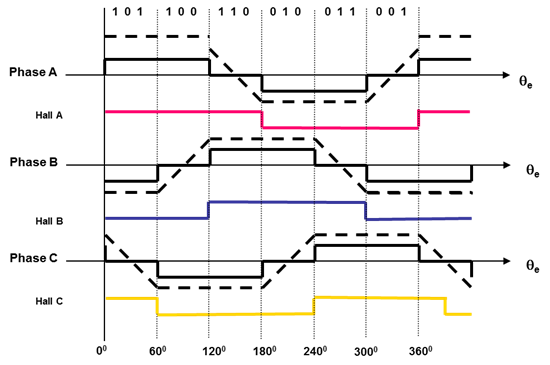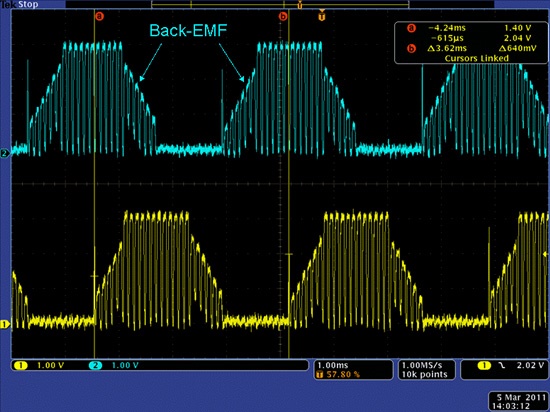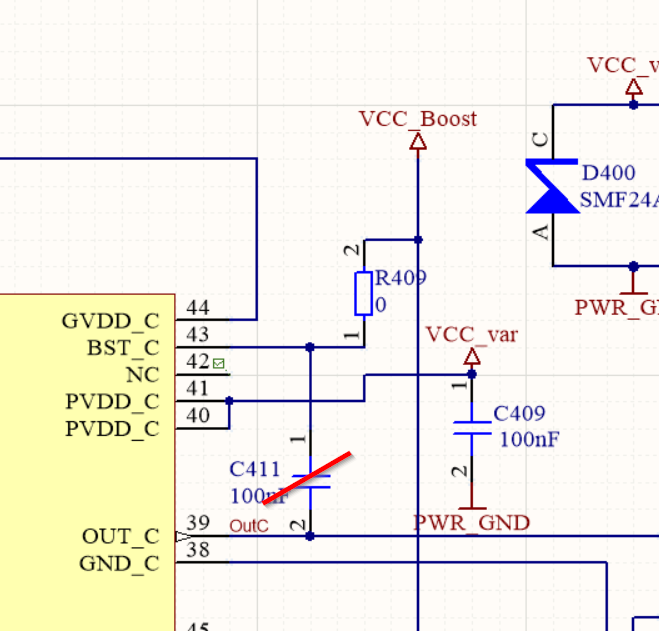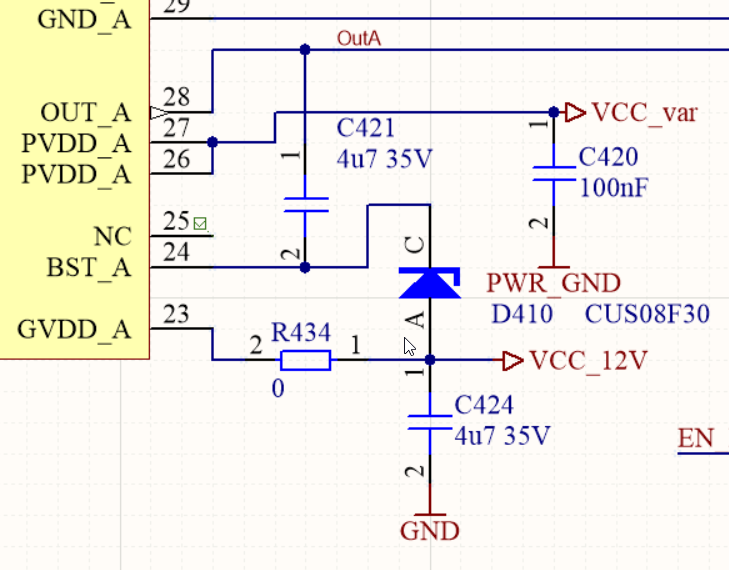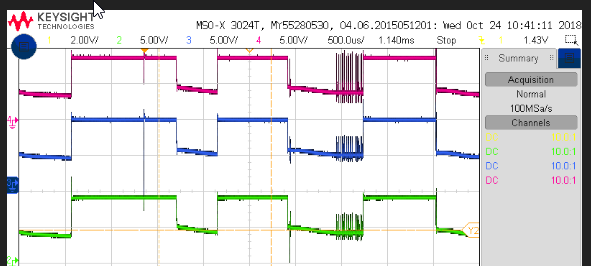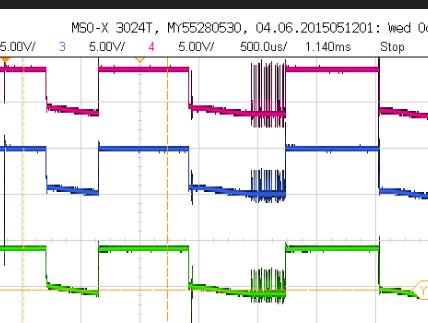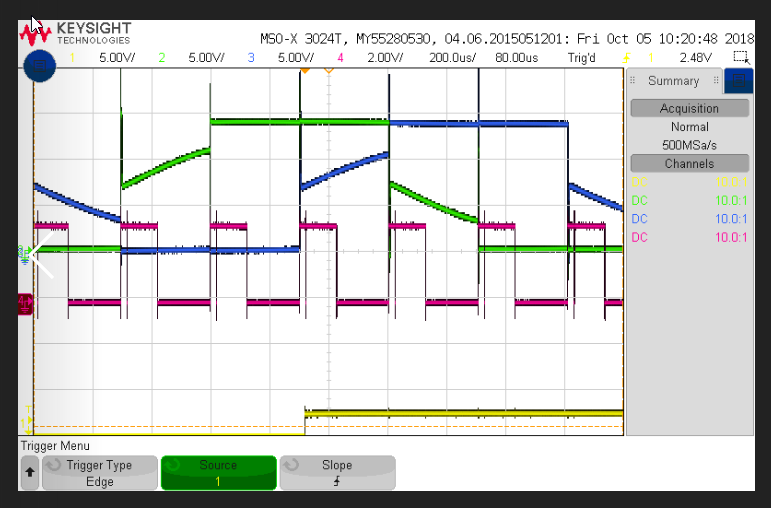Hi All
I try to use DRV8312 on a 3phase synchronous motor in a strict "block-commutation" mode. That means, that each of the lines only switches twice per rotation.
Our motor runs at rotations speeds from 10000/min to 60000/min, that is from 166Hz to 1KHz. So the time a high side transistor needs to stay on without switching can last up to 2ms.
As the high side FETs are NFETs, their gate voltage is generated with the booster-capacitor / diode mechanism. The DRV8312 is quite smart, it can detect, that its booster voltage to drive the high side fets is no longer sufficient, and decides on its own, that an additional switching cycle is necessary to reload the booster capacitor.
The DRV8312 is designed to run with a setup in PWM mode, so the lines are frequently switched by a PWM pulse to lower the actual output voltage
In this situation, the lines are frequently switched, that there is always sufficient booster voltage available.
In our design, we don't want PWM, neither do we want the DRV8312 to decide on it's own to switch a phase to reload the booster capacitor. So we experimented with enlarging the booster capacitor. This works to a certain amount of capacity, but it was never sufficient, to have no in-between-cycle switching.
Is there a possibility to supply DRV8312 from an external Voltage to feed its high side driving stages? In our design, we are running the motor at 12V. So the high side is never higher than 12V. We 24V available. Is there a way to feed it to the DRV8312, so it does not need to use the booster capacitors?
Like this?
Remove C411 and feed booster directly through R409 from 24V? Obviously we missed something, we tried and DRV8312 didn't like this. I vigorously tried to create additional switching pulses.
Is there a way to have DRV8312 not decide to switch one line on it's own?
Thank you for your help
Johannes


